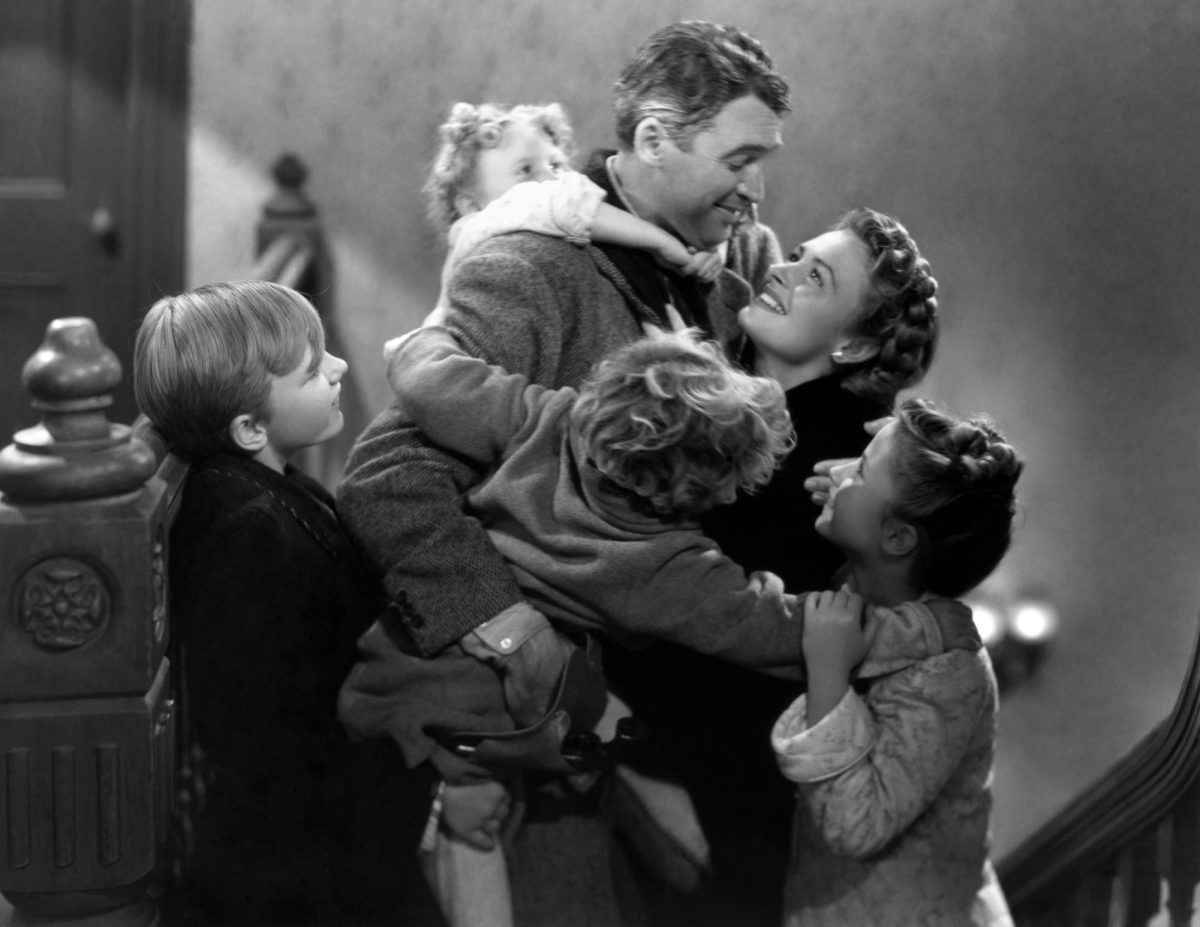In the plethora of Christmas movies that have been released over the decades, few of them have had a strong cultural impact like “It’s a Wonderful Life.” This film was released in 1947, making it one of the oldest Christmas films that is still watched during the holiday season. It is shelved next to more modern Christmas classics, such as “Elf” “How the Grinch Stole Christmas” “The Polar Express” “A Charlie Brown Christmas” and the short stop-motion Rankin/Bass productions “Rudolph the Red-Nosed Reindeer.” It is a timeless classic that has stood the test of time with its themes of togetherness and appreciation for what one has.
The plot of the film centers around George Bailey (James Stewart), who has worked all his life to give to family and friends to the point where it feels to him like he has nothing left. His friends and family grow up and move away to lead fantastic and wondrous lives while George is stuck where he is, feeling that he has to give up on his dreams to stay and help run his family’s banking company. Throughout George’s adult life, he is overcome with regret for not pursuing his dreams, and to top it off, a financial crisis begins to ruin the company to the point of bankruptcy around Christmas time. George contemplates suicide on Christmas Eve when an angel comes to Earth to show him what the world would’ve looked like without him in it.
Christmas movies are usually colorful and bright, with overtones of magic and wonder in their presence. “It’s a Wonderful Life” is the inversion of that concept. George Bailey doesn’t feel the magic and wonder. While the protagonists in other films go in search of that magic and wonder (i.e. Buddy in “Elf” going to New York to find his biological father), George Bailey spends most of his screen time giving it away, hollowing himself out. This can be a bit of a turn away from the serene atmosphere most Christmas movies present. This is why “It’s a Wonderful Life” is not for everyone; it juggles dark, adult themes like depression, regret, emptiness and financial burdens as opposed to the themes of family, belief, finding yourself, the acceptance of others and who they are, and the true meaning of Christmas in the movies mentioned above.
This doesn’t mean that “It’s a Wonderful Life” doesn’t not elaborate on its lighter themes, too; it just illustrates it more softly. Every unfortunate thing that happens to George Bailey, happens from his generous humility. Saving his brother’s life allowed him to live and have a celebrative military career. His feeling stuck in his hometown and never having the career he wanted to help his family’s banking company and thrive for as long as it could. His feeling of being lost within himself was the result of him giving his happiness and goodwill to others.
I think this is one of the biggest reasons why “It’s a Wonderful Life” is on such a pedestal in Christmas movies. It is more an adult Christmas film while most Christmas films are marketed towards children. Not many other Christmas movies incorporate these drab themes this well and still lead to a happy ending. Perhaps being marketed more for children is one of the best reasons why Christmas movies have a more magical sense, kind of like classic Disney movies. However, “It’s a Wonderful Life” holds a timeless candle on its themes and speaks to adults on a personal level. It has a message which means that things may be unfortunate now, but you should still appreciate the best of what you have, because it could’ve been worse.




